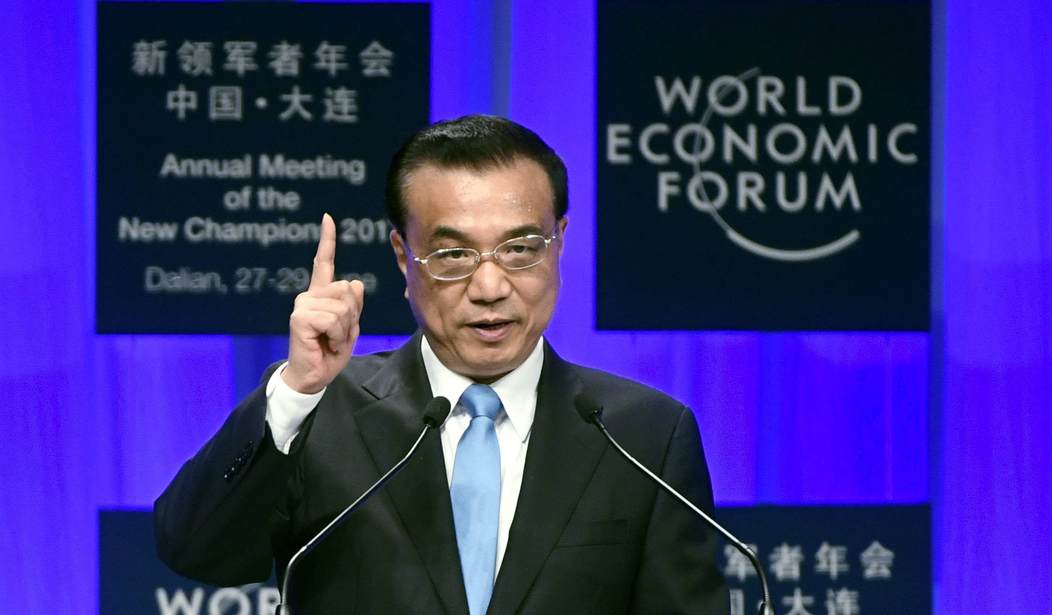God bless Arthur B. Laffer, the author of the eponymous curve. If statesmen are hedgehogs (with one big idea) or foxes (with many little ideas), Art is the mayor of Hedgehog City. His big idea is that lower taxes give you more economic growth. Along with my former business partner Jude Wanniski, Wall Street Journal editor Robert Bartley, and a handful of other economists and publicists, Art sold the idea of dramatic tax cuts to Ronald Reagan and thus stood midwife to the greatest U.S. economic boom of the past century. All of them were the intellectual children of the great Robert Mundell, but that’s another story. Years ago I had the honor to write the occasional paper for Art’s consulting service. He’s an American treasure.
Art had one magnificent idea. I took his economic service when I ran research groups at Credit Suisse and Bank of America, and he stopped by once a year for a talk. In 2001 he stopped by at Credit Suisse. American manufacturing jobs were disappearing and America’s trade deficit was exploding, but Art wasn’t fazed. Americans shouldn’t manufacture anything, Art averred: We would do the design, like Apple, and foreigners would dirty their hands making the actual goods.
In 2007 he was still bullish on U.S. stocks. I told him that the financial system was about to crash (at the time I was working in the bowels of the hedge fund world, manufacturing some of the toxic waste that would blow up in 2008). He thought I was mad; after all, taxes were low and the Republicans were in office. How could anything go wrong? On July 18, 2007, I appeared on Larry Kudlow’s CNBC show and warned of a “trillion-dollar AAA asset bubble” that would bring down the banking system. Larry didn’t believe me, either.
Neither Art nor Larry will believe me now when I tell them that all the tariffs the U.S. can devise won’t derail China’s economy. Under the title “The Great Fall of China,” Art warned July 30 that “China’s prosperity is now at risk and why China’s economy is highly vulnerable to harm from the tariffs that have either been proposed or already been enacted.” This report was closely read in the White House, according to press reports. President Trump appears to be of the same mind. This week he declared that China is no longer on a rapid trajectory towards parity with the U.S. economy.
Art vastly overestimates American economic strength and Chinese economic weakness, and his mistakes amplify the Administration’s mistaken view that tariffs will occasion intolerable economic pain for China. This is a strategic error of potentially fatal magnitude, on the order of the Russians at Port Arthur, the British at Singapore, or the French at Dien Bien Phu. Western observers speak ignorantly of a “Chinese economy,” when there really is no such entity: There is a past economy and a future economy which are quite different from each other. What we observe at any given time is the destruction of the old and the creation of the new. Averaging the two together is pointless.
Art’s argument has two parts (I will summarize rather than cite at length, because the report was written for private clients). The first is that Chinese stock prices have underperformed U.S. stock prices, and the second is that China has a very high level of corporate debt.
Art writes: “Chinese debt as a share of GDP includes corporate debt (160%), household debt (49%), government debt (36%), and bank debt (20%). Analysts point to excessive debt as the reason for China’s crazy GDP growth, claiming that debt-fueled infrastructure spending renders these GDP numbers misleading. And, they continue, this level of indebtedness leaves the Chinese economy highly levered, thereby increasing the risk of collapse in the future for the Chinese economy. The phrase ‘house of cards’ is frequently invoked.”
These observations are correct, but in my view misconstrued. The U.S. and China both have roughly the same level of debt to GDP. U.S. government debt is about 96% of GDP, household debt is 78% of GDP, and corporate debt is 93% of GDP, for a total of about 250% of GDP. In China, government debt is just 46% of GDP and household debt is just 47% of GDP, while corporate debt is 163% of GDP. A great deal of corporate debt is really government debt, that is, money owned to government banks by government-owned companies.
Most of that debt funded infrastructure, as I documented in a report for Asia Times published Oct. 20, 2017. I examined the share of corporate debt held by every major Chinese company, and found – not surprisingly – that the big infrastructure companies starting with Petrochina were the main debtors. China, in other words, used corporate balance sheets and state banks to finance infrastructure, rather than municipal bonds or federal trust funds or tax revenues. That’s why we observe so much “corporate debt” and so little “government debt.”
This bears on the relatively poor performance of Chinese stocks. A great deal of the capitalization of the Chinese market is state-owned companies that have been used like quasi-government agencies. Their stock performance has been mediocre. The single biggest nonfinancial name in the Shanghai Composite Index, Petrochina, traded at 9.5 yuan three years ago and trades at just 8.13 now. On the other hand, Alibaba, the Amazon+Google+UPS of China, has roughly tripled in price during the past three years.
China’s stock market capitalization is about 30% of GDP, and represents just 9% of household assets. The U.S. stock market is worth about 140% of GDP, and comprises 40% of household assets. In other words, the stock market is roughly five times as important for the U.S.
If you want to compare the debt position of the United States and China, consider that the United States has run up $21 trillion in government debt, and has nothing to show for it but future obligations to pay entitlements. China has run up a similar amount of debt, but has used it to build infrastructure. It now has dozens of brand new cities designed for self-driving cars, 30,000 kilometers of high-speed trains, excellent roads, and brand new airports. The U.S. has collapsing infrastructure, a rail system that is a national humiliation, and airports look like Third World leftovers.
I suppose it is correct to say that China’s economy is fragile. It is in the midst of a convulsive transformation. Deng Xiaoping began a convulsive transformation in 1979, launching the largest migration in world history, a movement of 550 million from countryside to city – two Americas, or the whole of Europe from the Urals to the Orkneys. Xi Jinping is presiding over another convulsive transformation, from a smokestack-and-export economy to a high-value-added, consumption-focused economy.
In the first case, China took a largely rural population that spoke a welter of dialects and transformed it into an urban population that for the most part understood Mandarin. For the first time in Chinese history, most Chinese are able to understand the same spoken language. Thousands of years of custom, habit and history have been uprooted in a single generation, and China has created a new people. On this topic I recommend the short ebook, “A Brave New China,” by the Italian sinologist Francesco Sisci.
Now China is engaged in a second transformation, from a country of industrial workers one generation removed from the farm, to an economy led by technology and services. And the Chinese propose to accomplish this in a single generation, while shifting a great deal of their industrial operations to cheap-labor venues from Turkey to Malaysia. That is part of the object of the One Belt/One Road initiative.
Of course China’s economy is vulnerable. The dragon is shedding its skin once again. Large parts of the Chinese economy will disappear and entire new industries will emerge. The tariff war with the United States will spur China to shift its low-value-added assembly industries to Vietnam or Indonesia, and concentrate resources on high-tech breakthroughs.
Art Laffer is too much of a free-marketeer to like barriers to investment, and he opposes the Administration’s restrictions on Chinese buyouts of U.S. companies. There I disagree with him: the president is absolutely correct to restrict Chinese access to U.S. technology on national security grounds. I do not understand why he wants China to stop asking U.S. companies to give it their technology. In my view the U.S. government should do this unilaterally. If Intel (for example) wants to set up a joint venture with the Chinese in exchange for better market share in China, it should have to submit the plan to government approval. That’ s not the free market, but I don’t care.
Such barriers slow but don’t stop China’s acquisition of technology. In many cases China doesn’t need to steal American technology, because it can develop its own. That’s what we have to fear the most.
What might tariffs accomplish? China’s trade surplus with the U.S. stood at $275 billion in 2017, but only about a third of that represents Chinese value added. China imports components, assembles them, and ships the finished product to the U.S. If China deducts a third of that $275 billion from its $11.7triillion GDP, it would lose 0.7% of GDP in an economy now growing at about 6.5% a year. That is why most economists who follow China say that the impact of tariffs on China’s economy will be small. I think it will be even less than that, because China will use the opportunity to shift workers from low-value-added assembly industries to higher value-added occupations.
The U.S. can retain its economic and military edge in the medium term only by sustaining a much higher pace of innovation than China. Protecting existing technology is well and good, but sooner or later everybody learns to do everything. I made the case for a military-led tech driver in this essay for the Journal of American Affairs. As I wrote to Larry Kudlow, tariffs won’t accomplish what President Trump wants them to.
All the other problems in the world are trivial next to the challenge of China. Russia has less than half of our population and a GDP the size of Italy. The world’s jihadists are primitive barbarians who can annoy but not defeat us if we show a modicum of resolve. But China is like the Borg in Star Trek: We will assimilate you, Beijing tells the whole of Asia. Resistance is futile. China wants to Sinofy the 600 million people of Southeast Asia and the 200 million Turks and their relations who live between Turkey and Tajikistan. It seeks to swallow up the great European and Japanese industrial companies into this burgeoning market. It wants to dominate the next generation of technology, including quantum computing. If that happens, there will be a word for an American who works for a Chinese, and it will be, “employed.” That is a nightmarish scenario, but it is not improbable.
Sadly, President Trump is bringing a knife to a gunfight. Much as I hate to disagree with old and good friends, I have to say that Art Laffer is steering him wrong.










Join the conversation as a VIP Member